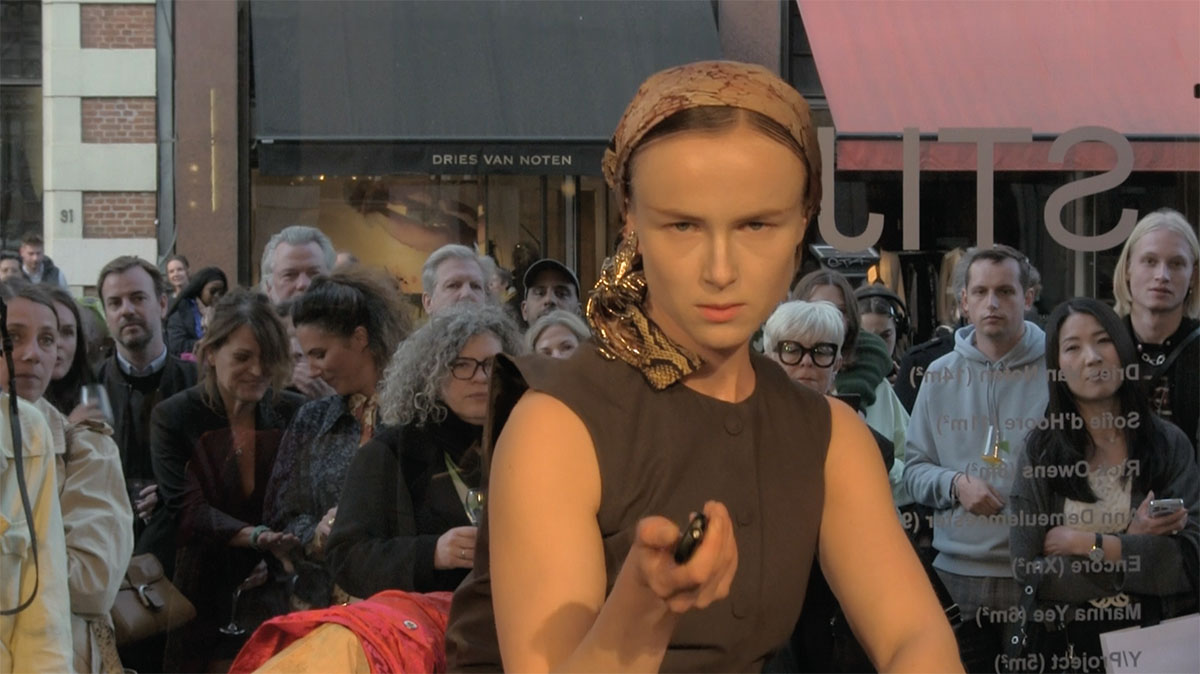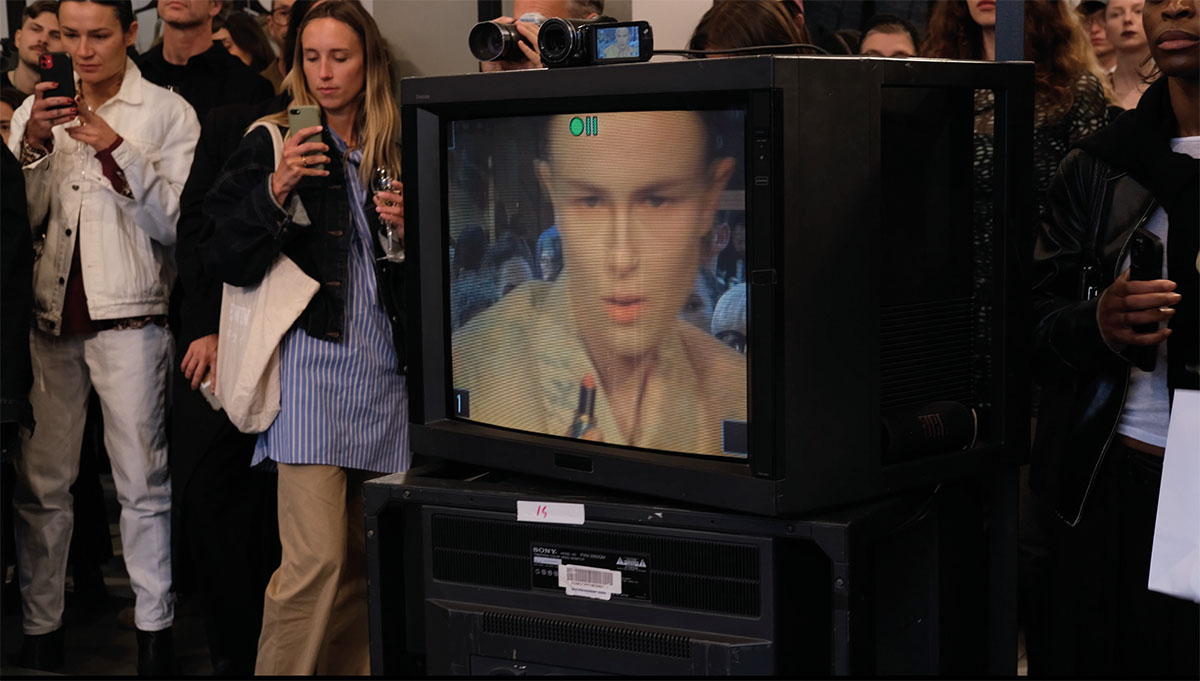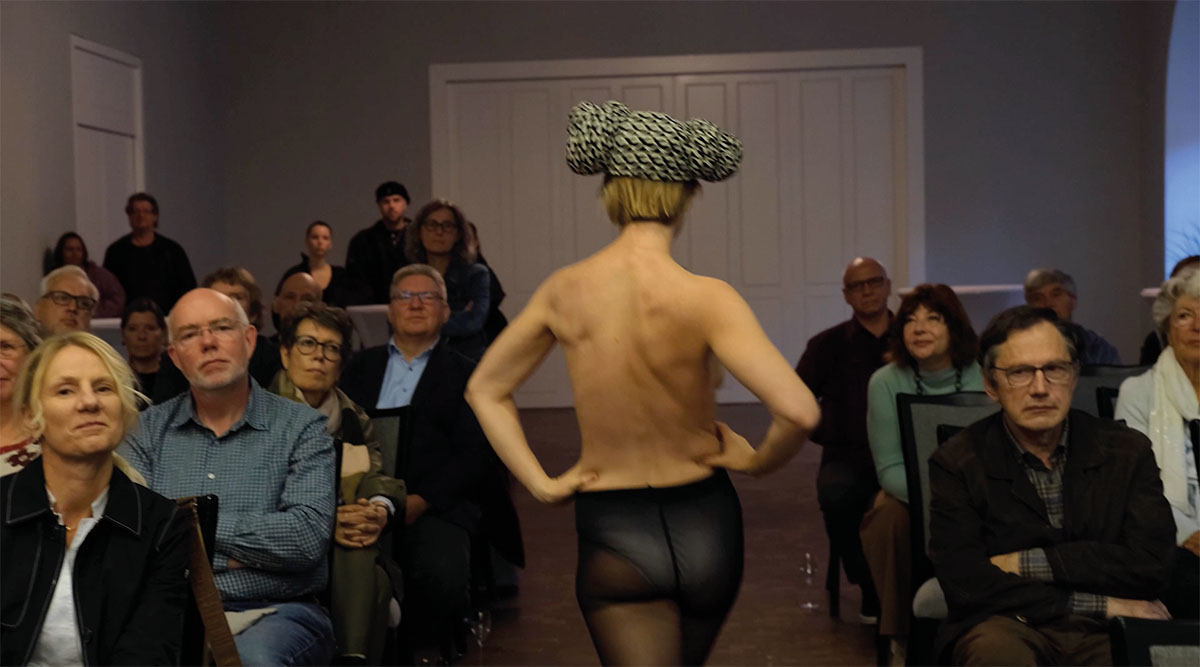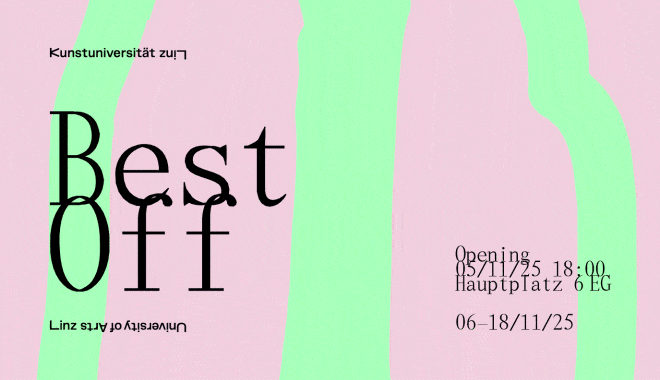
You have a background in professional ballet. How do you adapt this knowledge to your artistic practice? Do you find it more liberating or more limiting?
I see my ballet background as an incredible foundation that will always be part of my body, my muscles, my attitude and discipline, but, in a way, my work is against all that ballet is: perfection, the prejudiced idea of beauty, the strictness, and the development of an extremely unnatural body. Nevertheless, my ballet background gives me a certain freedom, or stepping away from it is liberating. Being a teenager in such a strict environment is hard and shapes you. But for me, it turned out to be a strength; it made me aware of how free I want to be, and it gave me the joy of finding new ways of movement, free of restrictions, free of presumptions, and free of perfection. This ideal beauty in ballet became one of my biggest inspirations.
You have been in front of the camera for your sister from a very early age. What does it mean to you to be a muse, and how does this influence your work?
The images my sister and I made together are a big influence on my work. At the time, it didn’t feel like I was in front of the camera; it was a play between the two of us. For me, it wasn’t about the images that came out of it, but about the moment we created them. It was one big performance; the shoots felt almost like plays we set up. What we did back then, at these moments, is what I’m still doing in my performances now. I take moments, ideas in which beauty is created, and completely deconstruct them.
I’ve been a muse for my mom’s paintings and other artists as well, and it’s very inspiring to see myself through the eyes of others. I enjoy stepping into all these versions of myself, but I do need to have a certain connection with the artist and always want to keep ownership over my body and my being. So, within these collaborations, I always ask myself, what does it bring me? And if there’s nothing to grow into, or I don’t feel the connection, I say no.

You frequently critique beauty standards, playing with the meaning of the female body and its relationship to clothing, for example, in the performance „A Fashion Show.“ Do these topics come from personal interest?
I’ve always been obsessed with fashion, with my mom’s red lipstick, and with images of my grandma in her wedding dress. There is something absurd about the way we create all these characters, all these versions of ourselves, but it’s also beautiful that we can. My grandma died very young, and there has always been a mystery around her. My mom says that I have her sense of style, her attitude. But who was she? She could be any woman. I think this obsession with beauty, with the female body, is a research into what kind of woman my grandma was, but also a research into what a woman is.
The world created all these social expectations of what a woman is, but for me, being a woman is so diverse. By stepping into the centre of the creation of these social expectations, this image of a woman, the fashion industry, I hope I can change it from within.

You also work sculpturally, particularly with movement, the body, and skirts as „designed for all“ in your „SKIRTS“ series. How do you think about body diversity, gender, and size in your design practice?
I’ve started making only skirts, because for me, a skirt is the only garment that can be purely sculptural and can stand apart from the body. It comes from the waist, and that could be the only connection with the body. For me, it is the garment that is most open to body diversity.
I approach my skirts in a sculptural way; it’s about shape, material, and colour. The body is not part of the process, and in that way, it results in a skirt for all bodies.
I do like to play with the stereotypical image of skirts, looking at historical constructions, playing with typical fabrics, taking these restricted ideas of skirts and deconstructing them into something sculptural. When looking back at the history of skirts, it has always been a garment worn by different genders, different cultures. A skirt is very diverse.


I hope one day we can see ourselves and others as individuals who change constantly, without being connected to gender. Maybe my skirts are an unconscious metaphor for that; they’re all unique and stand on their own.
You have collaborated with fashion brands such as Dries Van Noten and Nicklas Skovgaard. How were these collaborations for you? Is this something you would like to pursue more in the future?
I like when collaborations are continuous and allow you to grow into something together. And I feel with both Nicklas Skovgaard and Dries van Noten, they really invest time in getting to know me, building a relationship. And both of them gave me lots of freedom and trust. They reached out to me because of the work I make, and they didn’t want to change it into something else. But the special thing about collaborating is also that it brings new elements together, and that is how your work can develop.
I’ve often been told that fashion and art can’t go together. I think that’s very old-fashioned. For me, fashion is one of my biggest inspirations. So yes, it is definitely something I want to continue in the future.

Given my interest in the relationship between fashion display and art display, I am curious: when you exhibit your skirts or perform, how do you think about „display“ (whether pedestal, gallery, runway, or street) and its effects on how the work is perceived?
I think the interesting part for me is showing my work in different settings. If you perform the same piece in a fashion setting and an art gallery, the work is perceived completely differently. I like playing with this idea and don’t want to restrict myself to one kind of audience. I have lots of fun switching it around, that’s what makes people confused, and that’s what triggers me in finding a connection with the new audience.
Do you keep a visual or conceptual archive (materials, images, physical objects) that you return to in your process?
I have a big archive of my own videos. I film everything I do, and I experiment a lot in my surroundings with nobody around me. I make videos in hotel rooms, in my basement, in empty fields. And all these experiments are part of the process of making a performance for an audience. Sometimes it’s just a little gesture that leads to something bigger, or sometimes I film myself for hours and never look at it again. But then a year later, it all of a sudden makes sense for something new.

But I also read and write a lot and love to go to libraries or museums and just be surprised by things I find. I have notebooks where I collect all these thoughts.
Next to that, I collect costumes. My basement is full of costumes I bought at the opera, tutu’s from the ballet, vintage designer pieces from my parents, or items I found at markets. These always help me start experimenting.
Do you work in a studio, and if so, what does your routine look like?
I have a studio in the basement of my house. My ballet background made me very disciplined, so I work every day. But there is no real routine in what I do. Sometimes I have something very clear to work on, something with a deadline. Still, sometimes I can be in my basement for hours, experimenting, filming, creating characters, without working towards something. Then, when the doorbell rings for a package, I’m stressing out because I am covered in lipstick and only wearing tights.

But also when I travel, I always keep on working. I bring my little camera everywhere and just try things.
Making the skirts is almost like a meditation in between.

Where can we see your work next?
I’m working on a performance in Paris at the end of January during a special happening in collaboration with Be My Wife (aka Federico Nessi) and a few other amazing performance artists. And at the moment I am in Los Angeles. My mother will show some of her ‚Britt‘ portraits at The Cabin LA. And I will accompany the exhibition with a performance on November 30th. My skirts will be available at Biotop Japan from February, the first physical store!
Britt Liberg – www.brittliberg.com, www.instagram.com/brittliberg/
Britt Liberg (b. 1997, Netherlands) is an artist and designer whose work bridges fashion, movement, and sculpture. Trained in ballet and art at ArtEZ, she explores the relationship between body and garment through her ongoing SKIRTS by Britt Liberg series of one-of-a-kind pieces celebrating individuality and diversity. Her practice merges performance, clothing, and display, blurring boundaries between art and fashion.




